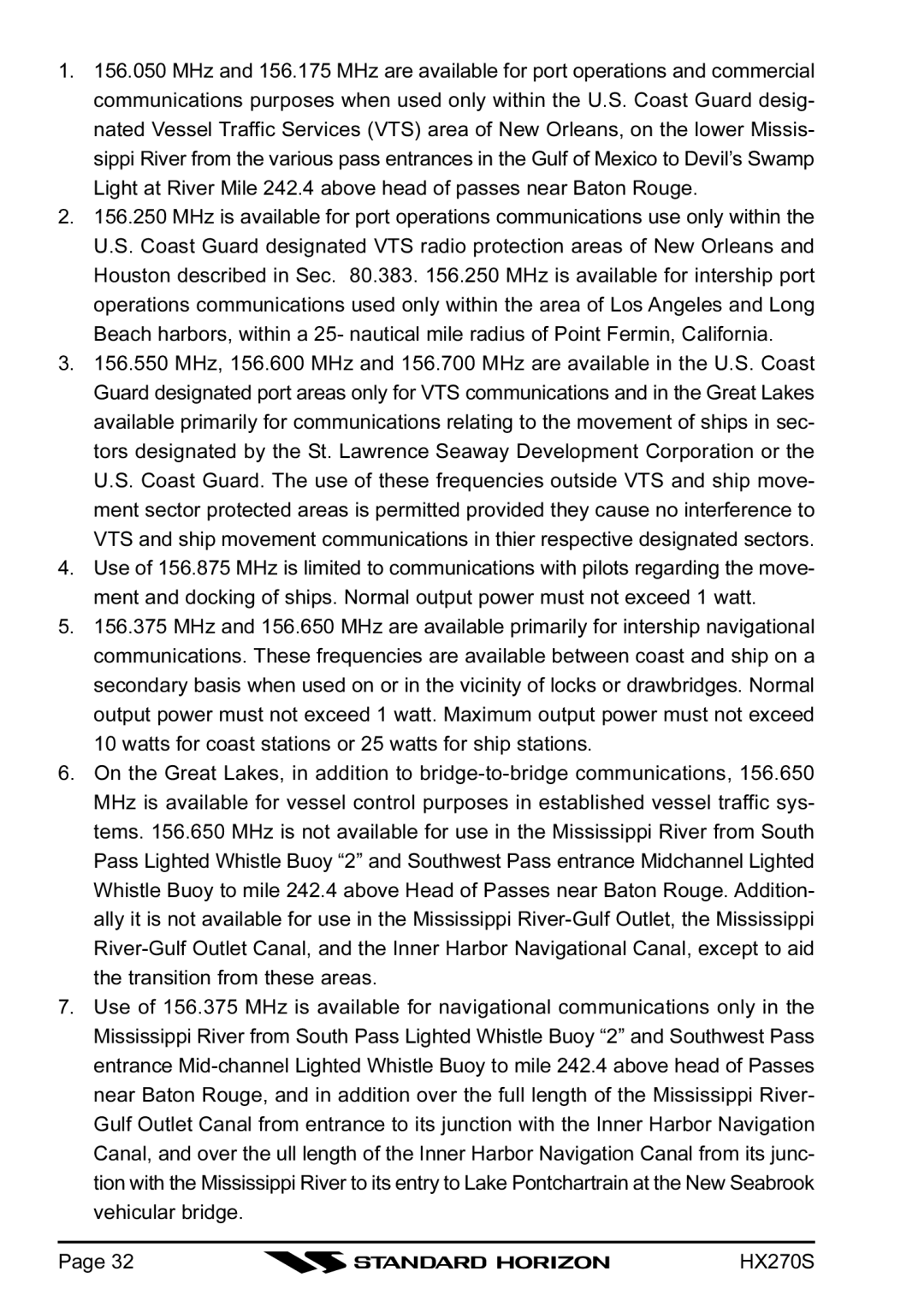HX270S specifications
The Standard Horizon HX270S is a versatile and robust handheld VHF marine transceiver designed to meet the communication needs of boaters and marine professionals. Renowned for its durability and comprehensive features, this device is a vital tool for enhancing safety and connectivity on the water.One of the standout features of the HX270S is its impressive waterproof rating of IPX7, which ensures that the radio can withstand immersion in water up to 1 meter for 30 minutes. This resilience makes it suitable for use in rough marine environments. Additionally, the radio is built to endure bumps and drops, making it a reliable companion for outdoor excursions.
The HX270S is equipped with a powerful 6W output, allowing for extended communication range under ideal conditions. This increased output power is complemented by an impressive battery life, with a 1650mAh lithium-ion battery providing up to 12 hours of continuous use. Users can easily monitor battery status and receive low battery alerts, ensuring they stay connected when it matters most.
The device features a large, easy-to-read LCD display that provides essential information, including channel numbers, battery life, and signal strength. The intuitive control layout allows users to access functions quickly, including the dual-watch feature, which allows monitoring of two channels simultaneously—ideal for listening to distress channels while communicating on another frequency.
The HX270S supports the latest digital selective calling (DSC) technology, which offers automated distress signaling capabilities. This feature enhances safety by automatically sending out a distress signal with the boat’s GPS coordinates to nearby vessels and coast guard stations when the emergency button is pressed. Additionally, it can receive DSC calls, allowing for critical communication in emergencies.
Another significant feature of the HX270S is its built-in GPS receiver, which provides accurate positioning information and can be used to mark waypoints or locations of interest on the water. This integration with GPS technology enhances navigational safety, as users can communicate their precise location in emergencies.
Furthermore, the HX270S offers compatibility with both USA, International, and Canadian Channels, providing a wide range of frequencies for diverse marine communication needs. The radio also includes programmable memory channels, allowing users to save frequently used channels for quick access.
Overall, the Standard Horizon HX270S is a well-rounded marine VHF radio that combines durability, advanced technology, and user-friendly features. It provides boaters with the assurance of reliable communication, crucial for safety and coordination on the water. Whether for recreational or professional use, the HX270S is a commendable choice for any maritime enthusiast.
